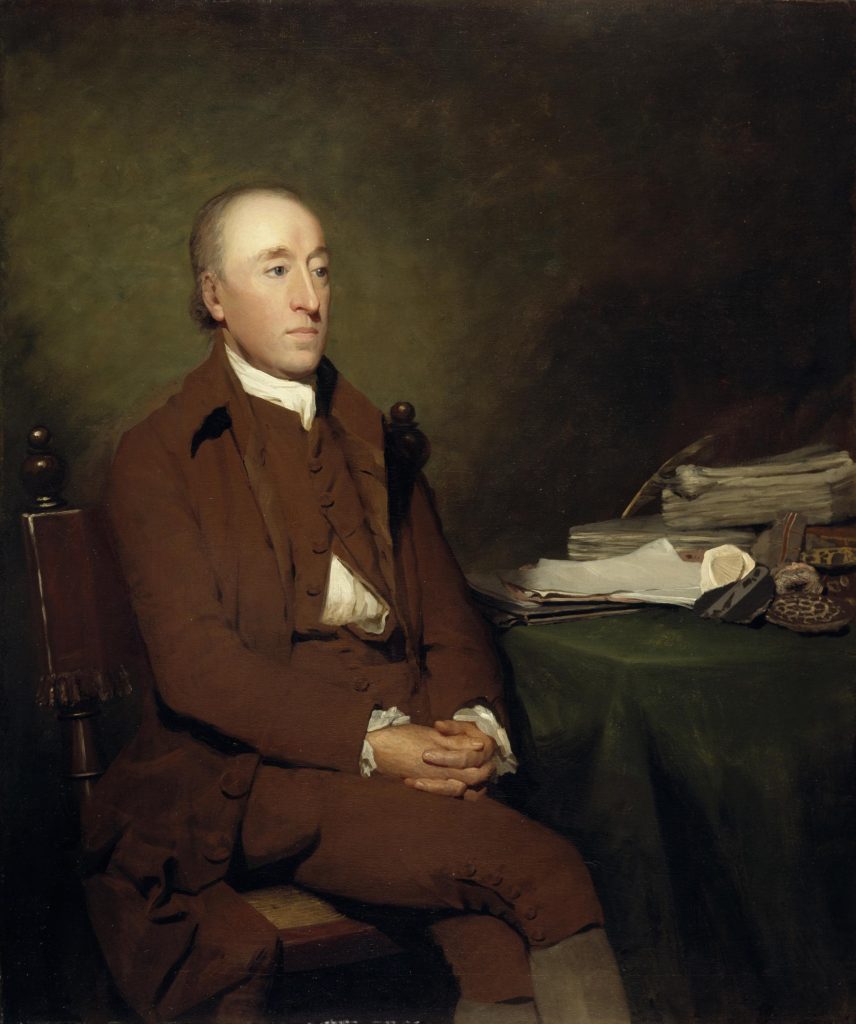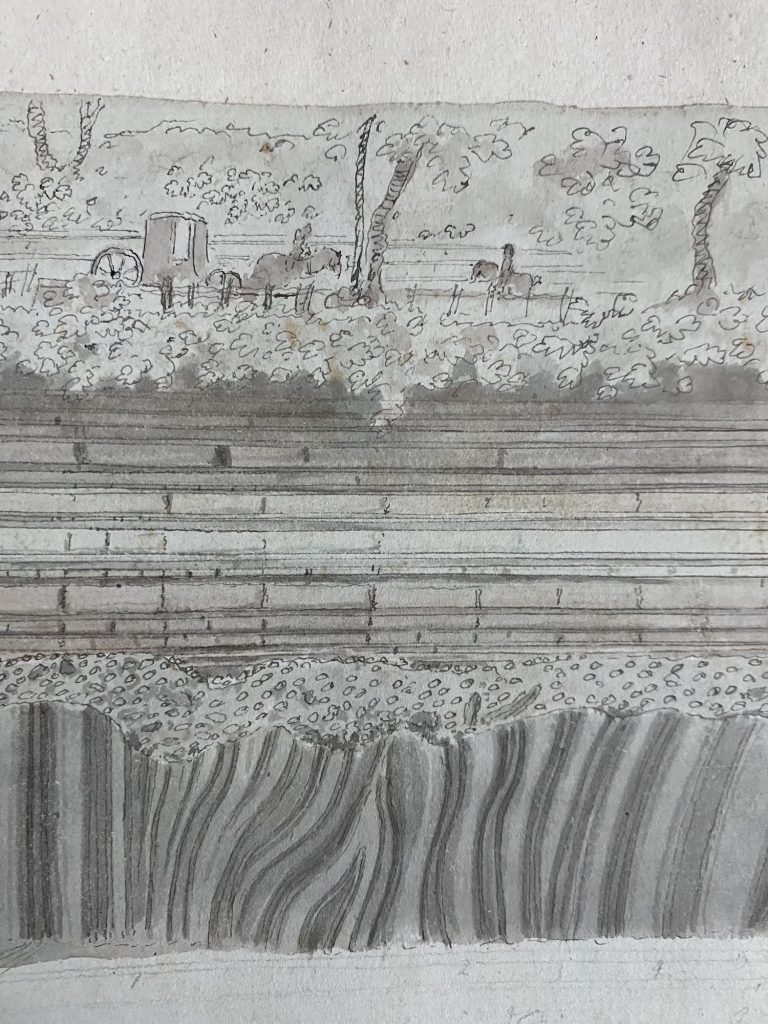Royal Botanic Garden Edinburgh and Design Exhibition Scotland are delighted to announce an open call to artists, makers, craftspeople and designers based in Scotland to submit expressions of interest to exhibit in Earth Matters at Inverleith House Gallery, Royal Botanic Garden Edinburgh. The exhibition will open in March 2026 and run to October 2026. The deadline for submissions is 9am on Friday 23rd May.
Earth Matters marks the tercentenary of the birth of the Edinburgh-born geologist, writer, farmer and chemist, James Hutton (1726-1797). Often described as the ‘father of modern geology’, he is known for his ground-breaking exploration of rock formations, but Hutton also gave much attention to the earth beneath our feet – soil. Earth Matters is inspired by Hutton and subsequent trailblazers who have helped challenge and change our understanding of soil. Through art, craft and design dating from the 18th century to the present-day, Earth Matters will illuminate the vital beauty and brilliance of earth.
Earth Matters is curated by Susanna Beaumont.

Courtesy National Galleries of Scotland.
Earth Matters – the background
A man of huge curiosity, who delighted in exploring, experimenting and questioning, James Hutton closely observed the landscape and geology of Scotland. This led him to propose in his book, Theory of the Earth (1788) an alternative way of seeing the world and to suggest a vastly deeper timescale for its creation than had previously been believed. Farming in the Scottish Borders and travelling across Scotland to study rocky landscapes – notably Edinburgh’s Salisbury Crags, Glen Tilt in Perthshire and Siccar Point, on the coast just south of Dunbar – Hutton developed his theory of ‘unconformity’. He saw rock formations and the earth beneath his feet as a ‘time piece’, both a tangible record and visual evidence of how the earth was created.
The artist and writer John Clerk of Eldin (1728-1812), frequently accompanied Hutton on these trips. Meeting when both students at the University of Edinburgh, Clerk of Eldin’s field sketches and ink drawings provide a record of what they saw. Not only do they record the landscapes they encountered but the drawings often include a human element – a figure, a horse and carriage, a dog – providing a sense of scale and an invitation to consider new ways of seeing the world. Clerk of Eldin’s drawings were ‘lost’ for nearly 200 years. They were rediscovered in 1968.


Earth Matters – the exhibition
Earth Matter’s starting point will be Hutton’s writings, in particular his unpublished ‘Elements of Agriculture’ inspired by the years he spent farming in the Scottish Borders. The exhibition will then travel onwards over 300 years to the present day, charting through artworks how our understanding of soil has unfolded. The exhibition will touch upon Charles Darwin’s The Formation of Vegetable Mould Through the Action of Worms, 1881; the writings of T B Macaulay, founder of The Macaulay Institute for Soil Research in 1930, (now part of The James Hutton Institute); the work of Lady Eve Balfour, farmer, author of The Living Soil and one of the founders in 1946 of the Soil Association and the American marine biologist and writer, Rachel Carson who spoke out against the use of pesticides in her 1962 book, Silent Spring. Earth Matters will also look at recent initiatives such as the 22nd World Congress of Soil Science held in Glasgow in 2022, the work of The James Hutton Institute and current regenerative farming practices.

Earth Matters – how to apply
We invite expressions of interest from artists, makers, craftspeople and designers based in Scotland whose work will invite visitors to Earth Matters to connect and delight in the earth, dirt, ground, mud, soil beneath our feet; inspiring deeper ways of seeing and understanding its vital importance to our lives.
You may wish to explore the use of soil as pigment or as a material; propose an artwork in clay or wild clay or a sculpture, vessel, artwork, text or textile that is inspired by or is a response to our ever-changing soil landscape both urban and rural. You may wish to suggest a work that explores sustainable building techniques such as earth buildings or clay plasters.
You are welcome to propose existing or new work.
Each selected practitioner will be given a fee of £750.00.
Please submit the following:
- Name, address and contact details (essential)
- Links to website / Instagram (optional)
- Up to 400 words on your practice, briefly outlining why you are interested in exhibiting in Earth Matters (essential)
- If you are proposing new work, please submit a brief outline of the work and a rough production budget
- If you are proposing an existing work, please submit an image, its dimensions and a brief description
- Up to 5 images of recent work (optional)
- CV (optional)
We appreciate that ideas might evolve and change, at this stage we are just expecting expressions of interest!
We welcome voice messages if this is preferable to writing.
Deadline 9am, Friday 23 May 2025, please send via email to susanna@designexhibitionscotland.co.uk
Submissions will be selected by Amy Porteous, producer Creative Programmes / Public Engagement, Royal Botanic Garden Edinburgh & Susanna Beaumont, curator Design Exhibition Scotland. We plan to be in touch with successful applicants w/c Monday 9 June.

Earth Matters – additional notes
In 1978 The John Clerk of Eldin’s ‘lost drawings’ were published in James Hutton’s Theory of the Earth – The Lost Drawings by Professors Gordon Craig, Donald McIntyre & Dr Charles Waterston and published by Scottish Academic Press in association with the Royal Society of Edinburgh and the Geological Society of London.
‘The drawings and manuscripts, whilst increasing our respect for Hutton’s genius, highlight especially John Clerk of Eldin as a major contributor to the Huttonian Theory. His keen eye, artistic pen, scientific precision and geological acumen are clearly revealed in his drawings and papers. We will probably never know the precise roles that the two friends played in the creation of the drawings, and it is perhaps more profitable to recognise the philosopher and the artist as are remarkable partnership’.
Professors Gordon Craig, Donald McIntyre & Dr Charles Waterston from Lost Drawings. Quoted by Alan McKirdy in James Hutton – The Father of Modern Geology, National Museums Scotland, 2022.

‘The medium of visual representation played a crucial role in the Enlightenment project of taking intellectual possession of nature, and of dominating it. Pictures helped to categorise the various natural phenomena, to disseminate knowledge about their appearance and capture them. By translating their theoretical considerations into the abstract forms of geological sections, these natural philosophers moulded a new visual language for seismology and earth history. The reading of a geological section implies complex visual conventions that have to be learnt.’
Susanne B Keller from Sections and views: visual representation of 18th century earthquake studies British Journal for the History of Science, June 1998. Quoted in The Drawing Book, a survey of drawing: the primary means of expression, edited by Tania Kovats, Black Dog Publishing, 2005.
